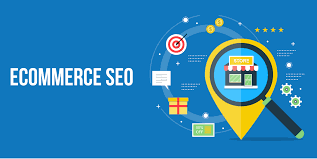Organic Growth Strategy: A Key to Sustainable Business Success
In today’s competitive business landscape, companies are constantly seeking strategies to drive growth and increase profitability. While there are various approaches to achieving business expansion, one of the most sustainable and effective methods is through organic growth.
What is Organic Growth?
Organic growth refers to the process of expanding a business by increasing its output and sales internally, without relying on mergers, acquisitions, or other external factors. It involves leveraging existing resources, capabilities, and customer base to drive gradual but steady growth over time.
The Benefits of Organic Growth
Organic growth offers several advantages that contribute to long-term success for businesses:
- Sustainability: Organic growth is sustainable as it builds on the foundation of the business’s core strengths and resources. It allows companies to grow at a manageable pace without risking financial instability.
- Control: By focusing on internal development, businesses have greater control over their growth trajectory and strategic direction. This enables them to maintain their identity and values while expanding.
- Risk Mitigation: Compared to rapid expansion through acquisitions, organic growth minimises risks associated with integration challenges, cultural clashes, and financial burdens. It provides a more stable path for growth.
- Cohesive Culture: Organic growth fosters a cohesive organisational culture as employees are involved in the company’s evolution. This leads to higher employee engagement, loyalty, and commitment.
Strategies for Achieving Organic Growth
To successfully implement an organic growth strategy, businesses can consider the following key approaches:
- Product Development: Continuously innovate and enhance existing products or services to meet evolving customer needs and preferences.
- Market Penetration: Expand market share by targeting new customer segments or geographic regions while leveraging existing capabilities.
- Cross-Selling and Upselling: Encourage repeat purchases from existing customers by offering complementary products or premium upgrades.
- Talent Development: Invest in employee training and development to build a skilled workforce that drives innovation and productivity.
- Customer Experience Enhancement: Focus on delivering exceptional customer service and building long-lasting relationships to increase customer retention and loyalty.
In Conclusion
Organic growth is not just about expanding revenue; it’s about building a resilient business model that thrives in the face of challenges. By prioritising sustainable internal development over quick fixes, companies can create lasting value for stakeholders while maintaining their competitive edge in the market.
Understanding Organic Growth Strategy: Key Questions and Insights
- What is organic growth and how does it differ from inorganic growth?
- Why is organic growth considered a sustainable business strategy?
- What are the key benefits of pursuing an organic growth strategy?
- How can businesses foster organic growth without relying on external factors?
- What role does innovation play in driving organic growth for a company?
- How can companies measure the success of their organic growth initiatives?
- What are some common challenges that businesses face when implementing an organic growth strategy?
What is organic growth and how does it differ from inorganic growth?
Organic growth refers to the method of expanding a business internally by leveraging existing resources, capabilities, and customer base to drive gradual but sustainable growth over time. In contrast, inorganic growth involves expanding through external means such as mergers, acquisitions, or strategic partnerships. The key difference lies in the source of expansion – organic growth focuses on utilising internal strengths and assets for development, while inorganic growth relies on external factors to fuel business expansion. Organic growth is often seen as a more stable and controlled approach that allows companies to grow at a manageable pace without the risks associated with external dependencies.
Why is organic growth considered a sustainable business strategy?
Organic growth is regarded as a sustainable business strategy due to its inherent focus on leveraging internal resources and capabilities to drive gradual expansion. Unlike rapid growth through mergers or acquisitions, organic growth allows companies to build upon their core strengths and existing customer base, fostering stability and long-term viability. By prioritising internal development over external dependencies, businesses can maintain control over their growth trajectory, minimise risks associated with integration challenges, and cultivate a cohesive organisational culture. This sustainable approach not only ensures steady progress but also establishes a solid foundation for continued success in the ever-evolving business landscape.
What are the key benefits of pursuing an organic growth strategy?
When considering the key benefits of pursuing an organic growth strategy, businesses can expect sustainable development that leverages existing resources and capabilities to drive gradual but steady expansion. This approach offers advantages such as long-term sustainability, giving companies control over their growth trajectory, minimising risks associated with rapid expansion, fostering a cohesive organisational culture, and ensuring strategic alignment with the company’s core values. By focusing on internal development and customer-centric innovation, businesses can achieve organic growth that not only enhances profitability but also strengthens their competitive position in the market over time.
How can businesses foster organic growth without relying on external factors?
To foster organic growth without relying on external factors, businesses can focus on maximising the potential of their existing resources and capabilities. By investing in product development, market penetration strategies, cross-selling and upselling opportunities, talent development, and enhancing customer experience, companies can stimulate internal growth organically. This approach involves leveraging the strengths of the business itself to drive sustainable expansion over time, ensuring that growth is driven by internal initiatives rather than external influences. By nurturing a culture of innovation and continuous improvement within the organisation, businesses can cultivate organic growth that is resilient and aligned with their long-term strategic goals.
What role does innovation play in driving organic growth for a company?
Innovation plays a pivotal role in driving organic growth for a company by fuelling creativity, differentiation, and adaptability. By continuously innovating products, services, processes, and business models, a company can stay ahead of competitors, attract new customers, and retain existing ones. Innovation enables businesses to identify emerging trends, anticipate customer needs, and seize new opportunities for growth. It also fosters a culture of experimentation and learning within the organisation, leading to improved efficiency and effectiveness in pursuing organic growth strategies. Ultimately, innovation acts as a catalyst for sustainable expansion and long-term success in today’s dynamic business environment.
How can companies measure the success of their organic growth initiatives?
To evaluate the effectiveness of their organic growth initiatives, companies can employ various key performance indicators (KPIs) and metrics tailored to their specific goals. Tracking metrics such as revenue growth rate, customer acquisition cost, customer retention rate, market share expansion, and profitability margins can provide insights into the success of organic growth strategies. Additionally, analysing qualitative factors like brand perception, customer satisfaction levels, employee engagement, and innovation output can offer a comprehensive view of the impact of organic growth efforts on overall business performance. By regularly monitoring and assessing these indicators, companies can gauge the outcomes of their initiatives and make informed decisions to drive sustainable growth in the long run.
What are some common challenges that businesses face when implementing an organic growth strategy?
When businesses embark on implementing an organic growth strategy, they often encounter a range of common challenges that can impede their progress. One significant obstacle is the need to balance short-term performance goals with long-term strategic objectives, as organic growth typically involves gradual expansion that may not yield immediate results. Additionally, businesses may struggle with resource constraints, such as limited capital or expertise, which can hinder their ability to invest in innovation and development. Another challenge lies in effectively differentiating their products or services in a competitive market to attract and retain customers amidst evolving consumer preferences. Overcoming these obstacles requires careful planning, adaptability, and a commitment to fostering a culture of continuous improvement and innovation within the organisation.






